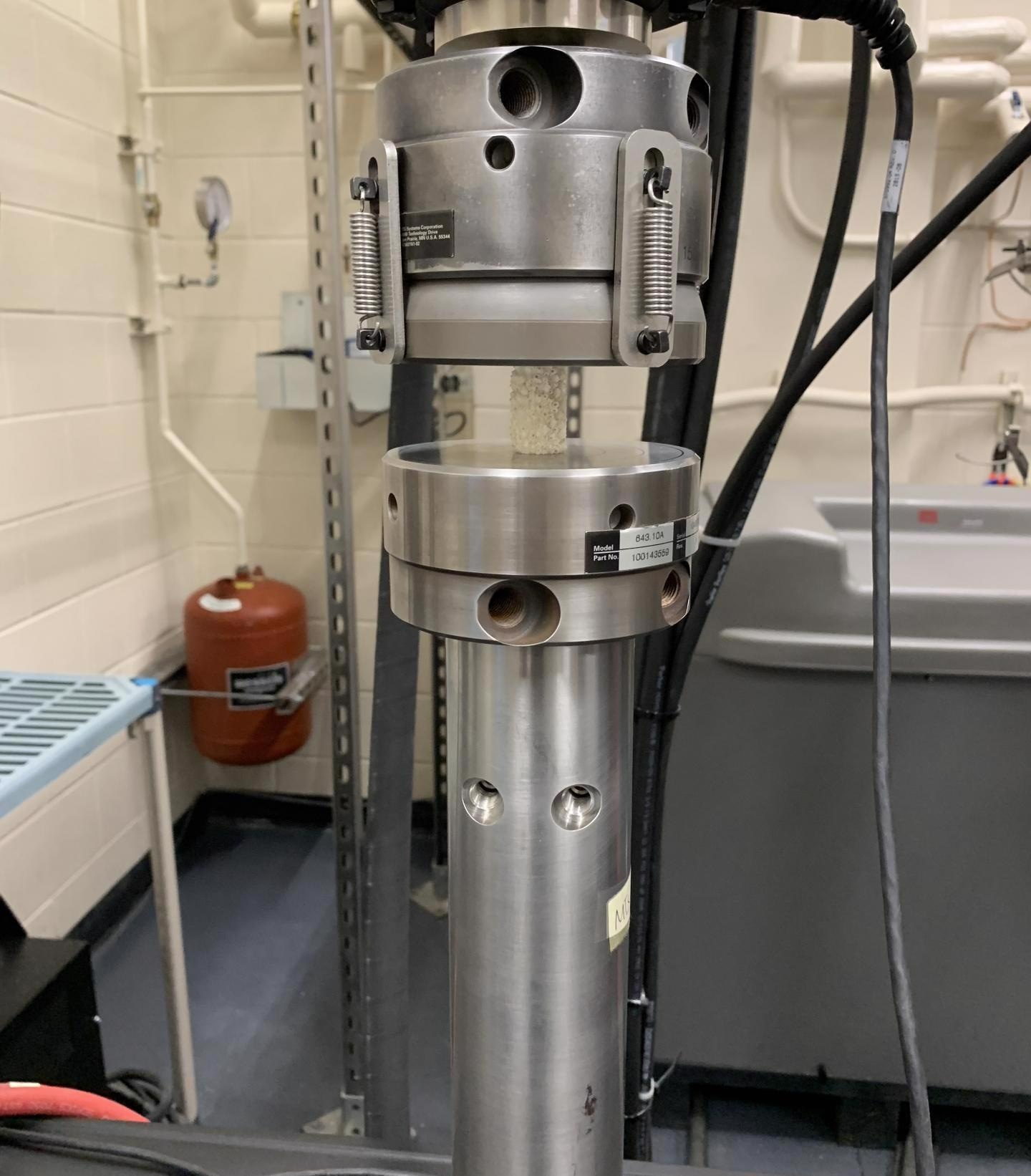Jan 11 2021
The endangered coral reefs in Florida have over $4 billion yearly economic effects on the state’s economy, and scientists from the University of Central Florida (UCF) are focusing on one factor that could be restricting their survival— the strength of the coral skeleton.
 A uniaxial compression test is performed on Acropora cervicornis coral skeleton. Image Credit: Mahmoud Omer, University of Central Florida.
A uniaxial compression test is performed on Acropora cervicornis coral skeleton. Image Credit: Mahmoud Omer, University of Central Florida.
In a recent study published in the Coral Reefs journal, the UCF engineering team tested the ability of staghorn coral skeletons to tolerate the forces of humans and nature, such as impacts from divers and hurricanes.
The investigators subjected the coral skeletons to higher stresses when compared to those induced by ocean waves, stated Mahmoud Omer, the co-author of the study and a doctoral student in the Department of Mechanical and Aerospace Engineering at UCF.
Under normal wave and tide regimes, a staghorn coral's skeleton will resist the physical forces exerted by the ocean waves. However, anthropogenic stressors such as harmful sunscreen ingredients, elevated ocean temperature, pollution and ocean acidification will weaken the coral skeleton and reduce its longevity.
Mahmoud Omer, Study Co-Author and Doctoral Student, Department of Mechanical and Aerospace Engineering, University of Central Florida
According to the U.S. National Oceanic and Atmospheric Administration, coral reefs in Florida produce billions of dollars in local income, generate over 70,000 jobs, protect the shorelines of the state from hurricanes and storms, and support a varied ecosystem of marine organisms.
The new study exposed a special safety trait of the staghorn coral skeleton—its porous design protects the coral from being directly crushed by an impact.
When the UCF team subjected skeleton samples to growing stress, pores eased the applied load and momentarily stopped additional cracking and structural failure. These pores would “pop-in” and take in some of the applied mechanical energy, thus avoiding catastrophic failure. Even though this potential has been demonstrated in other coral species, this is the first time it has been shown in staghorn coral.
For the first time, we used the tools of mechanical engineering to closely examine the skeletons of a critically endangered coral raised in a coral nursery. We now know more about the structure and mechanical performance of the staghorn coral skeleton than any other coral in the world. We can apply this knowledge to understand why staghorn coral restoration may work in some areas, but where their skeletons may fail due to human and environmental challenges in others.
John Fauth, Associate Professor, Department of Biology, University of Central Florida
The findings offer the baseline values that can be utilized to judge if nursery-reared staghorn corals have sufficiently strong skeletons for the wild and to match them to regions with environmental situations that optically suit their skeleton strength.
The name staghorn coral came from the antler-like shape of its branches, which generates a complex underwater habitat for reef organisms and fish. It is mainly found in shallow waters close to Puerto Rico, the U.S. Virgin Islands, Florida Keys, and other Caribbean islands but has dropped by over 97% since the 1980s.
Even though restoration efforts through transplanted, nursery-reared coral are on-going, investigators continue to work to raise their success rate.
Gaining insights into the coral skeleton structures could also inform the development of skeletal structure replacements for human beings, stated Nina Orlovskaya, an associate professor in the Department of Mechanical and Aerospace Engineering at the UCF.
Our findings are of high importance for development of novel and superior biostructures, which can be used as bone graft substitutes. Coral skeleton structures could be either chemically converted or 3D printed into bio-compatible calcium phosphate ceramics that one day might be directly used to regenerate bones in humans.
Nina Orlovskaya, Associate Professor, Department of Mechanical and Aerospace Engineering, University of Central Florida
Besides compression tests, the team examined mechanical properties as well as fluidic and spectral behavior. In the spectral analysis, the researchers used Raman microscopy, which enabled them to map the impacts of compression in the coral skeleton at the microscopic level.
Fluidic behavior analysis showed that vortices developed around the coral colony allowed it to capture food and transport wastes and respiratory gases.
The coral skeletons examined were obtained from the coral nursery of Nova Southeastern University; the nursery is situated around one mile off the coast of Ft Lauderdale, close to Broward County, Florida. The corals were dead and came from colonies that failed or were knocked loose at the time of a storm.
The co-authors of the study also included Alejandro Carrasco-Pena, a graduate of UCF’s mechanical engineering doctoral program; Bridget Masa, a graduate of UCF’s mechanical engineering bachelor program; Zachary Shepard, a graduate of UCF’s mechanical engineering bachelor program; Tyler Scofield, a graduate of UCF’s mechanical engineering master’s and bachelor program.
Additional authors were Samik Bhattacharya, an assistant professor in UCF’s Department of Mechanical and Aerospace Engineering; Boyce E. Collins, a mechanical and chemical engineering scientist at North Carolina A&T State University; Sergey N. Yarmolenko, a senior research scientist at North Carolina A&T State University; Jagannathan Sankar, a distinguished university professor at North Carolina A&T State University; Ghatu Subhash, Ebaugh Professor in the Department of Mechanical and Aerospace Engineering at the University of Florida; and David S. Gilliam, an associate professor with Nova Southeastern University.
The study was partly supported by the National Science Foundation and the U.S. Environmental Protection Agency.
Journal Reference:
Carrasco-Pena, A., et al. (2020) Mechanical properties, spectral vibrational response, and flow-field analysis of the aragonite skeleton of the staghorn coral (Acropora cervicornis). Coral Reefs. doi.org/10.1007/s00338-020-02003-8.